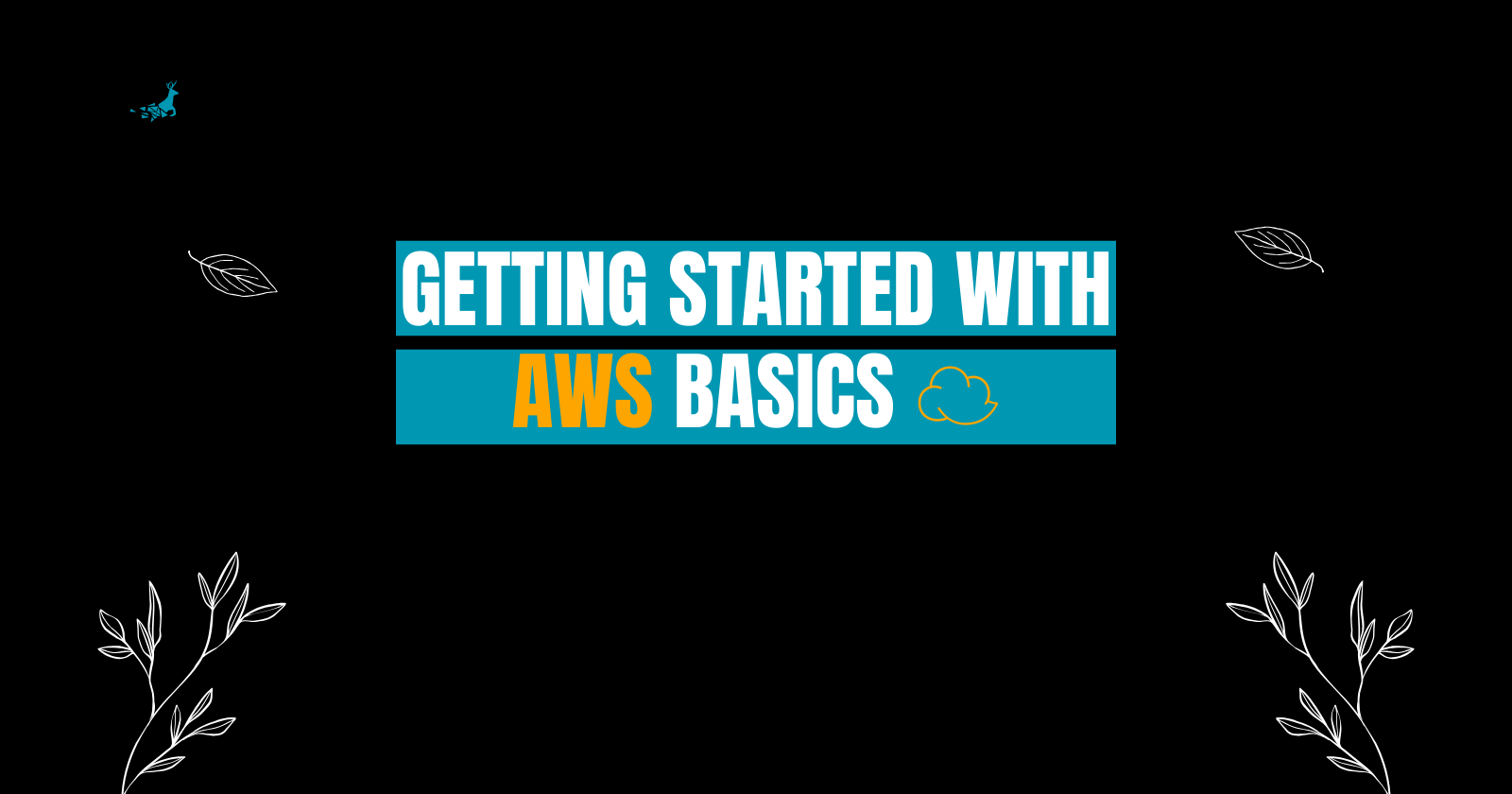Day 38: Getting Started with AWS Basics ☁
 Dhruv Moradiya
Dhruv Moradiya
Welcome to Day 38 of your cloud journey! You've come a long way, and it’s inspiring to see your dedication. Don’t let any setbacks break your consistency—each day brings you closer to becoming a cloud expert. Today, we’re diving into Amazon Web Services (AWS) fundamentals, focusing on IAM (Identity and Access Management) and creating hands-on tasks to apply your learning.
What is AWS?
Amazon Web Services (AWS) is a comprehensive cloud platform offering a range of services, from computing power to storage and databases. AWS is popular among developers, enterprises, and students alike because it provides a free tier for beginners. If you haven't signed up yet, consider creating a free AWS account to explore its tools and get hands-on experience!
Learn More: AWS Documentation
Understanding IAM (Identity and Access Management)
AWS Identity and Access Management (IAM) is crucial for controlling access to AWS resources securely. With IAM, you can:
Centrally manage permissions and control which AWS resources users can access.
Authenticate and authorize users, ensuring that only specific individuals or applications have the necessary permissions.
IAM is essential for creating secure AWS environments, especially when working in teams or managing sensitive data.
Deep Dive into IAM: IAM Documentation
Hands-On Tasks for Day 38
Task 1: Create an IAM User and Launch an EC2 Instance
Create an IAM User:
Go to the IAM dashboard in AWS.
Click on Users and create a new user with a username of your choice.
Assign the necessary permissions for EC2 access to this user.
Download or note the Access Key ID and Secret Access Key for this user to use later in your setup.
This permission you need to give for your user_1:
{ "Version": "2012-10-17", "Statement": [ { "Sid": "EC2BasicOperations", "Effect": "Allow", "Action": [ "ec2:Describe*", "ec2:RunInstances", "ec2:StartInstances", "ec2:StopInstances", "ec2:TerminateInstances", "ec2:CreateTags", "ec2:CreateKeyPair", "ec2:DeleteKeyPair" ], "Resource": "*", "Condition": { "StringEquals": { "aws:RequestedRegion": "ap-south-1" } } }, { "Sid": "SecurityGroupAndVolumes", "Effect": "Allow", "Action": [ "ec2:CreateSecurityGroup", "ec2:DeleteSecurityGroup", "ec2:AuthorizeSecurityGroup*", "ec2:RevokeSecurityGroup*", "ec2:CreateVolume", "ec2:DeleteVolume", "ec2:AttachVolume", "ec2:DetachVolume" ], "Resource": "*", "Condition": { "StringEquals": { "aws:RequestedRegion": "ap-south-1" } } }, { "Sid": "EC2Connect", "Effect": "Allow", "Action": [ "ec2-instance-connect:SendSSHPublicKey", "ec2-instance-connect:SendSerialConsoleSSHPublicKey" ], "Resource": "arn:aws:ec2:ap-south-1:*:instance/*" } ] }
Launch a Linux Instance:
Log in as the newly created IAM user.
Open the EC2 dashboard and launch a Linux instance (e.g., Amazon Linux 2).
Choose the instance type and configure the necessary network settings.
Install Jenkins and Docker Using a Shell Script:
SSH into your new EC2 instance.
Use the following shell script to install Jenkins and Docker in one go:
#!/bin/bash # Update packages sudo apt-get update # Install Docker sudo apt-get install -y docker.io # Install docker compose sudo apt-get install docker-compose-v2 # Install java-17 sudo apt install fontconfig openjdk-17-jre -y # Install Jenkins sudo wget -O /usr/share/keyrings/jenkins-keyring.asc \ https://pkg.jenkins.io/debian-stable/jenkins.io-2023.key echo "deb [signed-by=/usr/share/keyrings/jenkins-keyring.asc]" \ https://pkg.jenkins.io/debian-stable binary/ | sudo tee \ /etc/apt/sources.list.d/jenkins.list > /dev/null sudo apt-get update sudo apt-get install -y jenkins # It start automatic when sererv restart sudo systemctl enable jenkins sudo systemctl enable docker # Add all permission to user and jenkins sudo usermod -aG docker $USER sudo usermod -aG docker jenkins newgrp docker echo "Jenkins and Docker have been installed successfully!"Save the script, make it executable, and run it:
chmod +x install.sh ./install.shThis script will update the instance, install Docker, and set up Jenkins. You should now have Jenkins and Docker running on your EC2 instance!
Task 2: Create a DevOps Team of Avengers
In this task, you’ll set up a team by creating IAM users with custom permissions for a DevOps group.
Create DevOps Group:
In the IAM dashboard, go to Groups.
Create a new group named DevOps.
Attach the necessary IAM policies to grant permissions related to DevOps tasks, such as EC2 management, S3 access, etc.
Create Avengers Users:
Go back to Users in IAM and create three users. Name them something fun, like IronMan, Thor, and CaptainAmerica.
When creating each user, add them to the DevOps group you created earlier.
Ensure that each user has programmatic access by downloading their Access Key ID and Secret Access Key.
Verify Permissions:
- To ensure your setup is correct, log in as one of the users and try launching an EC2 instance or accessing S3. This will confirm that the permissions assigned to the DevOps group are working as intended.
Key Takeaways
AWS IAM is vital for securely managing users and access to AWS resources, helping you build secure cloud infrastructures.
Hands-on tasks provide a practical way to understand IAM policies, user roles, and EC2 instance management, essential skills for cloud-based DevOps.
Keep experimenting with IAM policies to gain more control over permissions and ensure your AWS environments are secure and organized.
With today’s tasks, you’ve learned the basics of IAM and practiced creating users, groups, and assigning permissions. Each task brings you closer to mastering cloud management on AWS! ☁
Subscribe to my newsletter
Read articles from Dhruv Moradiya directly inside your inbox. Subscribe to the newsletter, and don't miss out.
Written by
